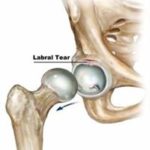Understanding Navel Displacement: Signs, Risks & Remedies
Ever felt that nagging discomfort around your belly button that just won’t quit? You might be dealing with navel displacement, a condition that’s often overlooked but can cause surprising discomfort. While it might sound like something made up, this misalignment of your belly button can trigger a cascade of symptoms from digestive troubles to back pain. Let’s dive into what’s really happening when your navel shifts from its natural position, and more importantly, what you can do about it.
What Is Navel Displacement? Separating Fact from Fiction
Navel displacement (also called nabhi dislocation or navel misalignment) occurs when your belly button shifts from its natural central position. Despite what skeptics might say, this isn’t just an old wives’ tale, it’s a real condition that can affect your core stability and digestive function.

Normal vs. displaced navel position and how it affects surrounding muscles
So, is navel displacement real or fake? It’s absolutely real, though often misunderstood. When the abdominal muscles lose their proper alignment, the navel can shift slightly from its centered position. This misalignment can affect the surrounding muscles and even impact your digestive system.
Common Causes of Navel Displacement
- Lifting heavy objects without proper technique
- Sudden twisting or bending movements
- Weak abdominal muscles or poor core strength
- Chronic digestive issues like constipation
- Pregnancy and childbirth
- Poor posture over extended periods
- High stress levels causing abdominal tension
- Previous abdominal surgeries
Spotting Navel Displacement Symptoms: Don’t Ignore These Clues
Recognizing the symptoms of navel displacement early can help you address the issue before it causes more significant problems. Many people dismiss these signs as simple indigestion or muscle strain, but when they persist, your navel alignment might be the culprit, and in such cases, you need physiotherapy for fasting relief.
Digestive Distress
- Bloating after meals
- Excessive gas and discomfort
- Constipation or irregular bowels
- Feeling of heaviness in stomach
Pain & Discomfort
- Abdominal pain near the navel
- Lower back pain without clear cause
- Discomfort when bending or twisting
- Pain that worsens after physical activity
Physical Signs
- Visibly off-center belly button
- Uneven firmness around abdomen
- Loss of appetite or early fullness
- Unexplained fatigue or weakness
When your navel is displaced, it’s not just a cosmetic issue, it can affect your entire core system, from digestion to posture.
Experiencing These Symptoms?
Don’t let navel displacement disrupt your daily life. Our specialists can help identify the root cause and create a personalized recovery plan.
How to Check for Navel Displacement at Home

Before seeking professional help, you can perform a simple self-assessment to check if your navel might be displaced:
- Visual inspection: Stand in front of a mirror and observe your belly button. Is it centered, or does it appear to lean to one side?
- Lying test: Lie flat on your back on a firm surface. Your navel should appear centered. If it shifts noticeably to one side, this could indicate displacement.
- Thread test: Place a cotton thread in a cross pattern over your navel. The intersection should align with the center of your belly button. If not, misalignment may be present.
- Pressure test: Gently press around your navel area. Does one side feel more tender or firm than the other? Uneven tension can indicate displacement.
Important: These self-checks are preliminary assessments only. For accurate diagnosis, consult with a healthcare professional, especially if you’re experiencing persistent symptoms.
Navel Displacement Treatment: From Home Remedies to Professional Care
Wondering how do you fix navel displacement? The good news is that many cases can be addressed with natural remedies and simple exercises. Let’s explore your options, from DIY approaches to professional treatments.
Natural Home Remedies
Gentle Navel Massage
A targeted massage can help relax tense abdominal muscles and promote realignment:
- Apply warm oil (coconut or sesame works well)
- Use gentle circular motions around the navel
- Massage for 5-10 minutes daily
- Best performed after a warm shower
Warm Compress Application
Heat therapy helps relax muscles and improve circulation:
- Apply a warm towel to your abdomen
- Keep in place for 15-20 minutes
- Repeat 2-3 times daily
- Follow with gentle stretching
Effective Exercises for Realignment
Pelvic Tilt
Lie on your back with knees bent. Tighten your abdominal muscles and press your lower back into the floor. Hold for 5 seconds, then release. Repeat 10 times daily.
Boat Pose (Naukasana)
Sit with knees bent, feet on the floor. Lean back slightly, lift feet off the floor, and extend arms forward. Hold for 10-15 seconds, gradually increasing duration.
Cat-Cow Stretch
Start on hands and knees. Alternate between arching your back upward (cat) and letting it sag (cow) while breathing deeply. Perform for 1-2 minutes daily.
Before and after regular alignment exercises (Results may vary)
Lifestyle Adjustments for Prevention
Dietary Changes
- Increase fiber intake to prevent constipation
- Stay well-hydrated with warm water
- Avoid gas-producing foods if bloating occurs
- Eat smaller, more frequent meals
Daily Habits
- Practice proper lifting techniques
- Maintain good posture throughout the day
- Take breaks from prolonged sitting
- Incorporate regular core-strengthening exercises
Want More Personalized Recovery Tips?
Download our free guide with additional exercises and techniques specifically designed for navel displacement recovery.
Get Your Free Recovery Guide
When to Seek Professional Help

While many cases of navel displacement respond well to home remedies, some situations warrant professional attention. Consider seeking help if:
- Symptoms persist despite two weeks of home treatment
- Pain is severe or worsening over time
- You notice a bulge or protrusion near your navel (could indicate hernia)
- Symptoms interfere with daily activities or sleep
- You experience fever, vomiting, or severe abdominal pain
Types of Specialists Who Can Help
| Specialist | How They Can Help | When to Consider |
| Physiotherapist | Manual therapy, core strengthening exercises, posture correction | For mild to moderate displacement with muscle imbalance |
| Chiropractor | Spinal and pelvic alignment, abdominal adjustments | When displacement affects posture or causes back pain |
| Ayurvedic Practitioner | Traditional navel centering techniques, herbal remedies | For those preferring traditional approaches |
| Gastroenterologist | Diagnosis and treatment of related digestive issues | When digestive symptoms are predominant |
Frequently Asked Questions About Navel Displacement
Is navel displacement real or fake?
Navel displacement is absolutely real, though often misunderstood. It refers to the misalignment of the belly button from its natural centered position, which can affect surrounding muscles and digestive function. While not typically recognized in conventional Western medicine under this specific name, the physical symptoms and muscular imbalances are legitimate and can be addressed through various therapeutic approaches.
How do you fix navel displacement?
Navel displacement can be addressed through several approaches:
- Gentle abdominal massage with warm oil in circular motions
- Core-strengthening exercises like pelvic tilts and boat pose
- Proper posture maintenance and correct lifting techniques
- Professional manual therapy from physiotherapists or chiropractors
- Addressing underlying causes like constipation or weak abdominal muscles
The approach should match the severity and cause of your specific condition.
Can navel displacement cause back pain?
Yes, navel displacement can contribute to back pain. When your navel is misaligned, it often indicates an imbalance in your core muscles. This imbalance can affect your posture and put additional strain on your back muscles, particularly in the lower back. The connection between your abdominal muscles and back is integral to your core stability, so issues in one area frequently affect the other.
How long does it take to recover from navel displacement?
Recovery time varies depending on severity and consistency of treatment:
- Mild cases: Often improve within 1-2 weeks with regular home remedies
- Moderate cases: May take 2-4 weeks with consistent exercises and proper care
- Severe or chronic cases: Could require 1-3 months, especially if professional treatment is needed
Consistency with recommended exercises and lifestyle changes is key to effective recovery.
Can pregnancy cause navel displacement?
Yes, pregnancy is a common cause of navel displacement. As the uterus expands, it puts pressure on the abdominal muscles and can stretch them significantly. This stretching, combined with hormonal changes that relax ligaments, can alter the position of the navel. After childbirth, the abdominal muscles may not fully return to their pre-pregnancy state without specific exercises, potentially leaving the navel in a slightly different position.
Taking Control of Your Navel Health
Navel displacement might not be dinner table conversation, but understanding this condition can make a world of difference if you’re experiencing unexplained abdominal discomfort. By recognizing the symptoms early and implementing simple home remedies, you can often address the issue before it becomes more problematic.
Remember that your core health affects everything from digestion to posture, and taking care of your navel alignment is part of maintaining overall wellness. Whether you opt for gentle self-care techniques or seek professional guidance, addressing navel displacement can help you return to comfort and better health.
Need Personalized Guidance?
Our specialists can help identify the exact cause of your navel displacement and create a customized recovery plan.














